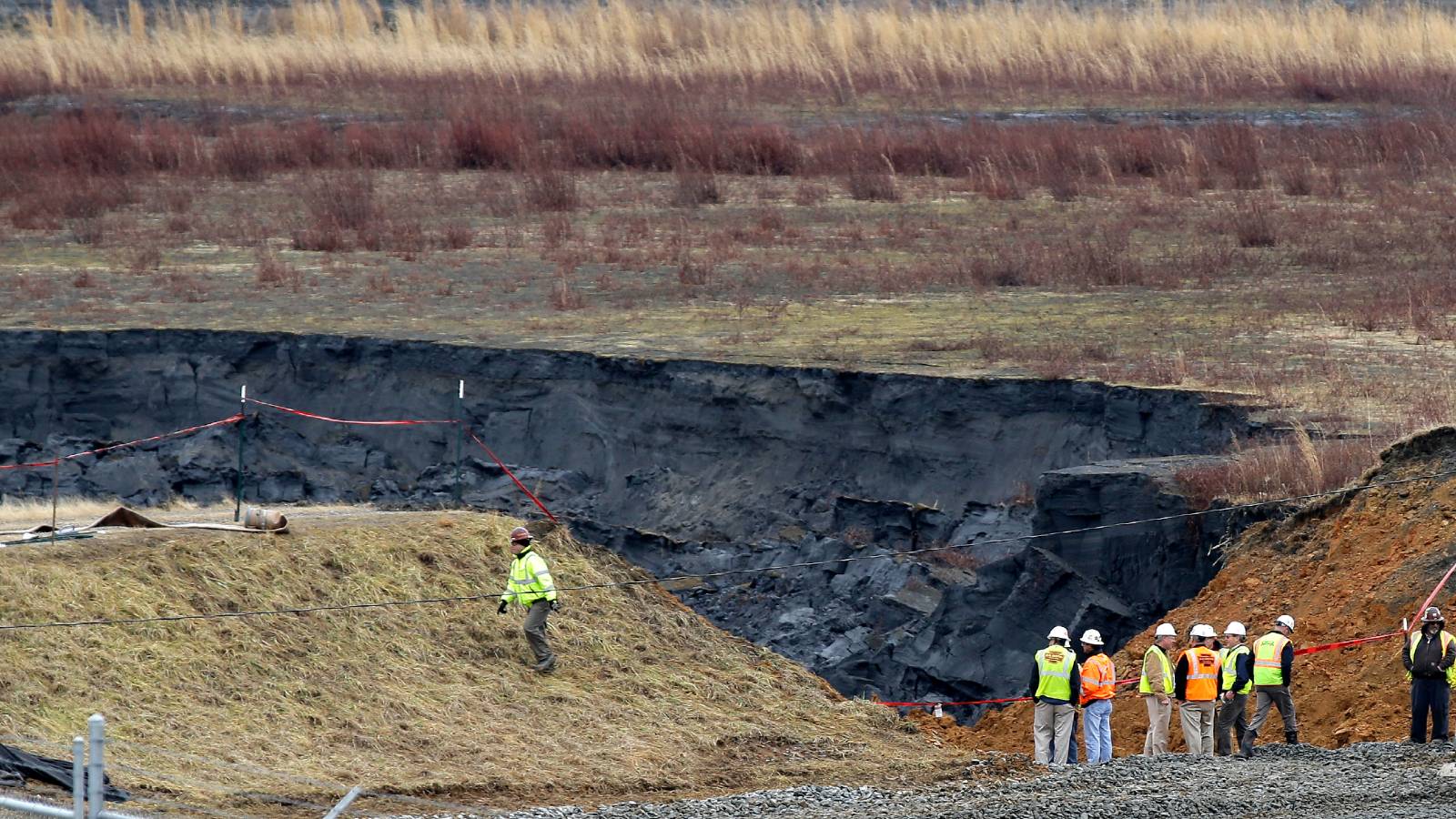More than 90 percent of the country’s coal plants are contaminating water across 43 states, according to a new report. And nearly half of them have no plans to clean up the mess.
The study, released on Thursday by the environmental watchdogs Earthjustice and the Environmental Integrity Project, looked at 292 sites around the country, from the desert outside Las Vegas to the coast of Massachusetts. The researchers focused specifically on coal ash, a toxic byproduct of burning coal to produce power.
Failure to clean up coal ash violates a federal rule that was passed in 2015 after a stormwater pipe burst at the Duke Energy Dan River Steam Station in North Carolina, spilling 39,000 tons of the contaminant into the Dan River. Coal ash contains cancer-causing heavy metals such as arsenic and cobalt. According to the Environmental Protection Agency, toxic sludge from the spill stretched over 70 miles downstream, threatening the drinking water quality of thousands of residents.
One of the goals of the 2015 rule was to halt the industry’s practice of dumping coal ash into unlined ponds that allow the material to seep into groundwater, creating an environmental hazard for nearby communities, and most companies are now required to send their waste to safer containment sites. However, the report found that utilities are failing to abide by other aspects of the federal rule, such as cleaning up contaminated sites and restoring groundwater.
“We know that the contamination of groundwater at these coal plants will get worse if nothing is done to control the source of pollution,” said Abel Russ, senior attorney at the Environmental Integrity Project and co-author of the report, in a press release. “We have an opportunity to clean these sites up before they create a much larger problem. If the industry would simply follow the rules, we could make significant progress.”
The authors ranked the most contaminated sites in the country using data that power companies were required to make available as a result of the 2015 rule. At the top of the list are the San Miguel Plant, just south of San Antonio, Texas and the Reid Gardner Generating Station, located on the Moapa Indian Reservation in southern Nevada. At both sites, the report cites failures to properly monitor and remove contaminants.
Mike Nasi, the environmental counsel for the San Miguel plant, characterized the report’s methodology as flawed and said that the company is working closely with regulators on reclamation efforts. Jennifer Schuricht, a spokesperson for the Reid Gardner Generating Station also refuted the report, saying that it is dismissive of the company’s clean up efforts, which include the removal of more than 2 million cubic yards of toxic waste.
Contamination from coal ash isn’t distributed evenly across the country. According to the report, approximately 70 percent of decommissioning power plants with coal ash ponds are located in low-income neighborhoods or majority non-white census tracts. To help mitigate the public health risks in these areas, the report authors developed a set of recommendations, including better federal oversight and enforceable cleanup schedules. Without these steps, they warn, these communities will have to endure the long-term effects of coal ash contamination.
“This report chronicles the bad faith of big coal in America that has created public and environmental health problems that will take generations to clean up in some cases,” said Fred Tutman, founder of the Patuxent Riverkeeper in Maryland. “It’s an ugly story and people need to take heed.”



